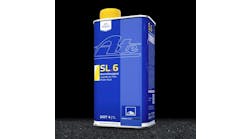Road force balancing isn’t new. But two decades ago, many technicians didn’t want to dedicate the time to do it on every tire that needed balancing.
“For a long time, it took an extra 25 seconds,” says Greg Meyer, product manager for Hunter Engineering Co.’s wheel balancers. “To a technician, 25 seconds feels like 25 minutes. Road force machines became comeback fixers.”
And this wasn’t an isolated occurrence. Meyer says the entire industry grew to accept that 10% of tire customers would come back complaining of vibrations and a rough ride on new replacement tires. “Maybe a good shop was 5%, but if you weren’t doing a good job, it might have been 20% of customers not satisfied with ride quality. For many years, our industry fixed them as they came back. Well, those days are over. A lot of times, people don’t come back.”
That’s why Hunter has focused development efforts on making its road force balancers function quickly and automatically. Lasers measure the wheel dimensions and runout and automatically check the wheel’s centering. Messages on the screen alert the technician to a possible bent wheel or mis-centered tire and guide them through the corrective process.
Meyer says it’s important for owners and store managers to establish a policy that every tire is road force-balanced. Machines can be set to automatically check road force on every balance, but if that automatic function isn’t enabled, technicians have the ability to turn it off and on as they want.
He says Hunter can’t “see” all of its machines at work, but Meyer estimates 30% to 40% of the company’s Road Force Elite balancers are set to use the load roller for road force with every use. About half of technicians use it most of the time, he notes.
“If you have 98% to 99% (of customers) that are happy with your work, then that continues to grow your business, and that pays dividends over time because you’re not losing customers. In the internet world, if one unhappy customer goes online and complains about how he went back to the shop twice and the car still vibrates, that can set you back for months.”
Even with well-manufactured aluminum wheels, Meyer says seemingly small improvements in road force can provide a big improvement in comfort. A well-made aluminum wheel may only have 0.002 of an inch of runout. Moving a stiff point in a tire from the high spot to the low point of the wheel “might get four or five pounds of road force reduction, even with only 0.002 of an inch of runout.” Considering the normal limit for road force for passenger cars is 20 pounds, that’s a significant reduction.
Combining proper mounting methods and forced matching, Meyer says 98% of the tires and wheels that leave a tire dealership will be in good shape. “You may have one percent or two percent that you have to do something with. Maybe the tire isn’t okay or the rim is bent. But you’re dealing with a fraction of a fraction now, as opposed to 10% or more.”
Dealers should also recognize there are times where road force measurements above the standard set by an original equipment manufacturer are acceptable. A 1987 pickup truck that’s used on the farm is an example. If the road force is 24 pounds, it’s probably alright. If it measures 55 pounds, it probably needs to be addressed. “That’s good business,” says Meyer. “Don’t throw good money after bad. Time is money.”
That’s a practical message that resonates with Dave Shedlock, director of national accounts for BendPak Inc., the maker of the Ranger line of balancers and tire equipment. Shedlock says it’s good to remember that proper balancing doesn’t require road force.
“We believe that the two major components of accurate balancing are proper centering and proper torqueing. Using the proper adapters on any brand of balancer will most often yield the desired results. Collets, truck cone kits and flange plates are all essential balancing components for any wheel balancer.
“Bottom line, road force balancing is likely not for every customer,” says Shedlock. “While it is overkill for many customers, it is also a very useful tool for extreme low-profile tires or to resolve persistent vibration problems.
“Even the most sophisticated balancers cannot eliminate vibrations from a bent wheel or an out-of-round or irregularly worn tire.” ■





